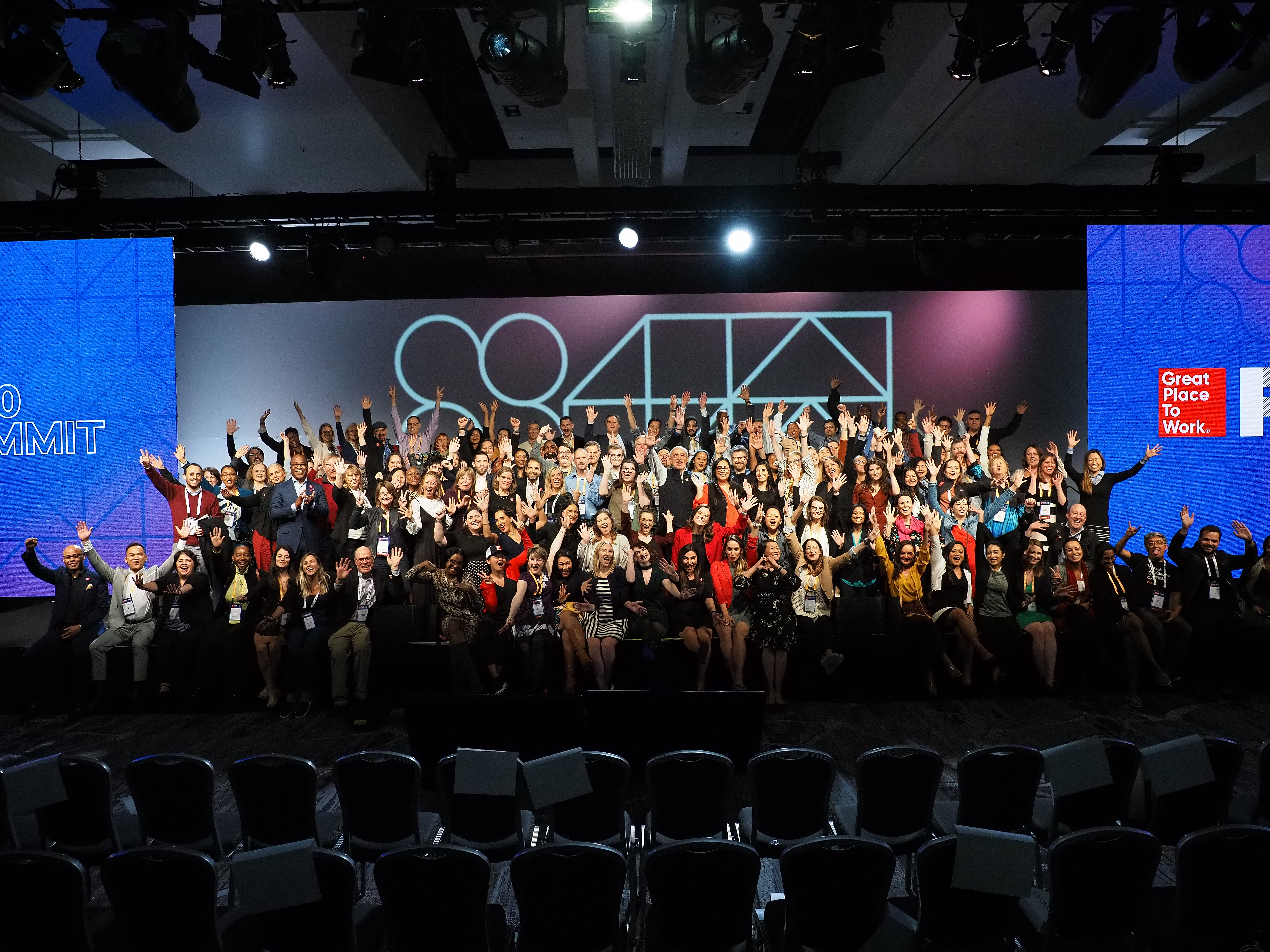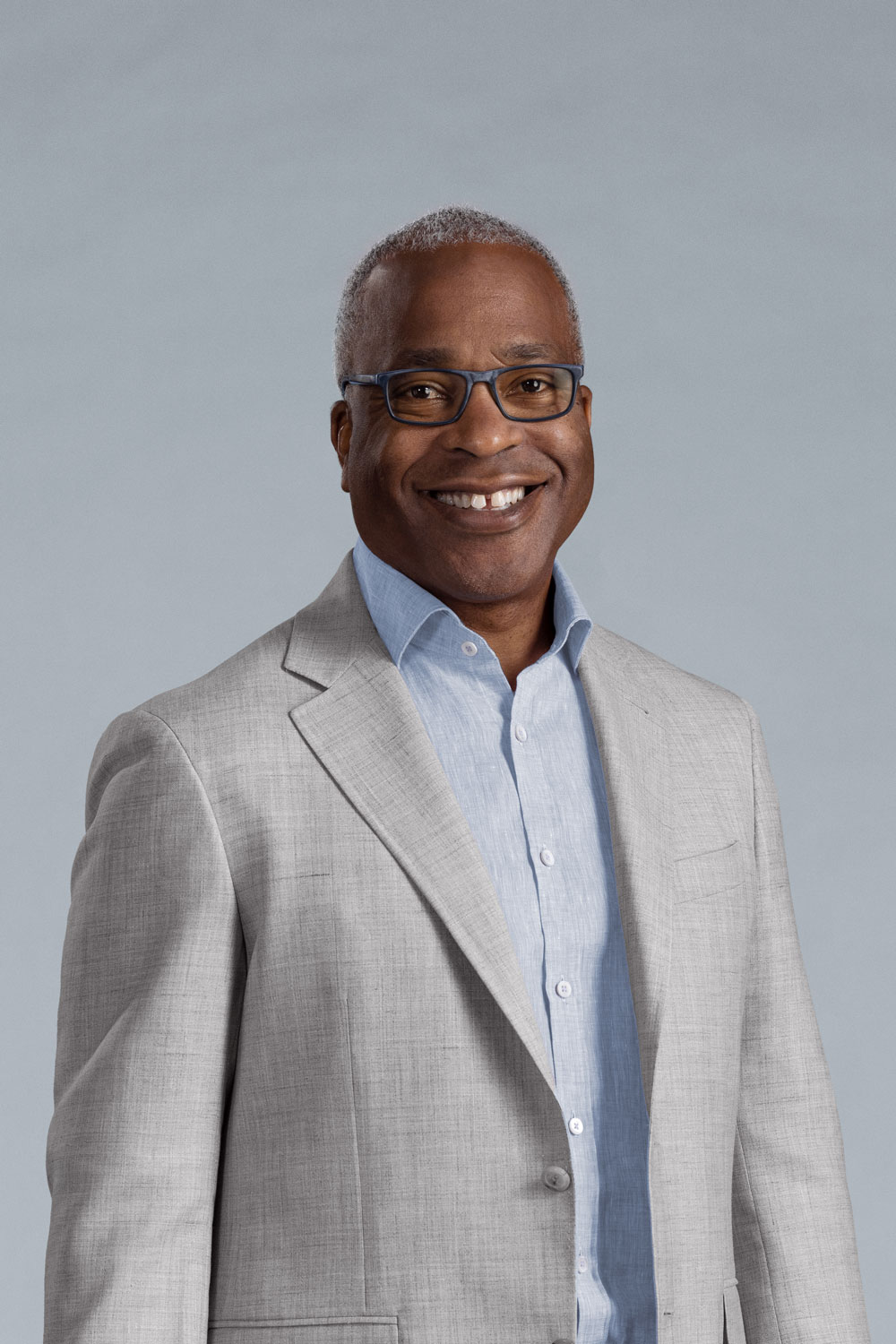By Michael C. Bush and Ann Nadeau.
Below is a PRIDE message from our chief people officer and my chief of staff, Ann Nadeau. It is not easy to be the chief people officer in an organization that is the home to every best people practice on earth.
Ann is the most beloved leader in our business and her experience as a Lesbian has enriched her unworldly talent. She has navigated almost everything that a person can navigate. This experience has created a great businesswoman, P&L leader, strategist and executive and our culture and people thrive as a result. There is no human being in our global business that she does not connect with in a way that shows care, which fuels innovation.
Enjoy.
Michael
I love watching the pride flags go up every June.
It's an ever-growing, beautifully inclusive set of colors representing our diverse LGBTQIA+ community — the voices and experiences as diverse as the flag aim to communicate to all who see them.
As colors have been added through the years to acknowledge all our different backgrounds and experiences, I find myself pausing to honor the voices in our community that haven't or don't get heard — the voices that some do not think are important enough to listen to and are not valued as much as other voices.
It takes me back to a particular moment in my life. It was just over 20 years ago. I was a young queer professional somewhat early in my career. I had just joined Great Place To Work® and was feeling good about my choice.
I believed I had joined an organization that cared about listening, especially to the less frequently heard voices — the voices that may be a little more afraid to speak up, the voices of diverse, hardworking people.
I felt I could be part of a mission that provided the platform for these voices to truly be heard. I quickly became a good student of our, then little, business and the work we were doing to help big businesses and powerful brands around the world.
After a few weeks on the job, I started to connect with the data and demographics that were a part of our Trust Index© survey that our customers used to collect employee experience feedback from their employees. We asked about gender. We asked about race. We asked about ethnicity.
But we did not ask about sexual orientation or gender identity.
I remember coming home from work that night and telling my then girlfriend (now wife of 25 years) with tears in my eyes that somehow our full experiences were not important enough to be seen at these "supposed Best Workplaces" (I was a bit snarky back then; maybe I still am).
The more I talked and thought about this situation, the more outraged I felt inside.
That night I vowed to get this demographic added to the survey. If "they" who decide these things did not agree with me then I would quit.
The next day I marched into the office with all my bravado to point out this "oversight" as I had planned to call it. When the time came, I was so scared. My voice shook as I tried to explain why this was important.
I could feel the lump in my throat and tears forming in my eyes as I tried to explain how not being seen and heard in the results of the employee experiences made me and my queer counterparts feel invisible, not cared about and simply unimportant (the farthest thing from feeling proud).
In that moment, someone who had the power chose to listen to me. They decided my voice and the many different voices of our community needed to be heard and treated respectfully in the workplace.
Twenty years ago, it was a big risk for our little business, and it was met with resistance by several companies — "we don’t and won’t ask this of our employees" or "we can't ask this in our state" or "we don't have gay people here."
It didn't matter, because it was the right thing to do and already decided. It had been printed on hundreds of thousands of employee surveys (because printing is what we did back then) and there was no going back.
From that point on, we, and our amazing customer community, were able to hear from and learn about the work experiences of employees in the LGBTQIA+ community — an early expression of our commitment to creating great workplaces For All™.
So, I didn't quit. I dug in deeper. My commitment grew and my contributions increased. My voice still got shaky at times, but I knew the ears on the other side were open and listening.
I learned how one person listening, truly listening, and caring about someone as a full person with different life experiences could change the course of a person's life. And if done well (as this listening person did with me), it could change the course of LGBTQIA+ working peoples’ lives forever, for the better.
About six years back I met Michael Bush, the finest of listening people, with whom I am lucky to have had the pleasure of working closely through these years as a mentor, people leader and CEO. As a friend, he has embraced me and my family as if we were his own — "chosen family."
So, I didn't quit. I dug in deeper. My commitment grew and my contributions increased. My voice still got shaky at times, but I knew the ears on the other side were open and listening.
As we come to a close on another pride month, Michael and I have outlined a few things to help you support your diverse LGBTQIA+ team members so that they may show up to work every day as their full selves.
How to support your LGBTQIA+ employees
1. Support moving the needle on "Prefer Not to Answer"
The Human Rights Commission found 62% of openly LGBTQIA+ graduates return to the closet when they enter the workplace. This means over half of LGBTQIA+ employees are not yet feeling supported to show up as their full selves, speak their minds and contribute fully to their work.
Each LGBTQIA+ person has their own coming out experience, each as beautifully diverse as the LGBTQIA+ community itself. In my life, coming out has not been just one big act, it is an ongoing process as I encounter new employees, clients and vendors.
For others, they may feel more exposed because there never was a so-called closet for them to go back into and feel safe.
As a result, we see employees choosing the option "prefer not to respond" rather than choosing to identify as "LGBTQIA+". In fact, our data indicates that more people would rather tell us that they don’t want to tell us than actually tell us.
As leaders, we need to respect and vocally support that coming out is a personal and uniquely individual experience, one that we hope each of our LGBTQIA+ team members chooses to make within the organization — in their own time.
For us to advance the people within the LGBTQIA+ community, we need to encourage and celebrate those who choose to identify as LGBTQIA+, show vulnerability in role modeling coming out ourselves and patiently exhibit care for those who are not yet ready.
If we can move the needle here, we will be one step closer to connecting with LGBTQIA+ employees' true work experiences and be positioned to better support them on their employment and life's journey.
2. Be intentional about creating safe moments (and places) for all people to be themselves
Psychological safety is real. It has real impacts not only on individuals leading full lives but also the businesses who employ them.
Not feeling psychologically safe has a negative impact on company culture and decreases innovation.
Our measure of innovation, the Innovation Velocity Ratio (IVR) of White employees decreases by a factor of three when they also identify as LGBTQIA+, while that of Black, Latinx and Asian LGBTQIA+ employees decreases by a factor of five.
Building psychological safety is a necessary and ongoing process.
Leaders can make it easier for LGBTQIA+ employees at work by making it clear that you encourage LGBTQIA+ people to be themselves and you expect straight employees to support that. It is straight employees' responsibility to work through any feeling of discomfort they may have, and not LGBTQIA+ employees' responsibility to protect them from it.
No one in your organization should spend energy walking a pronoun tightrope when asked about their weekend, hesitate to put a picture of their family on their desk or endure being called the wrong name or assigned the wrong gender.
It is straight employees' responsibility to work through any feeling of discomfort they may have, and not LGBTQIA+ employees' responsibility to protect them from it.
LGBTQIA+ people should be fully confident that the values and leaders in your organization have their back as they take the risk to show up authentically in the workplace.
Within our workplace, Michael and I meet with every Great Place To Work employee, together with their people manager, in Q1 each year. We ask three questions — one is always, "If there is one thing that could change to make this a more psychologically safe place for you, what would that be?" We know how important this is, so we get right to it.
The team knows ahead of time that we will ask this question and they are equally as ready to let us know.
After we ask the question, you can feel the stillness in the air. It is in this moment that you realize the listening and response to this answer will make or break the employee's feeling of safety in our company.
We don't let it ride on this one conversation each year — it is truly our people managers who have been trained around mental health and well-being issues that make this type of enquiry about psychological safety an intentional ongoing effort.
3. Make time to study up so you may listen better
There are many great resources out there that can help you connect with some of the experiences of the LGBTQIA+ community. Hulu, HBOMax and others have dedicated, curated Pride-themed channels with series and films showcased in the month of June.
You can also pick up a bit of history in the book, "We Are Everywhere: Protest, Power, and Pride in the History of Queer Liberation" or simply browse a whole host of content on the subject of Pride and the LGBTQIA+ community on NPR.
Our work continues
Twenty years later, I can't help but be both proud of the progress we've made and certain that we still have work to do to ensure that all voices are heard. Now, there's a young professional (or professionals rather!) knocking on my door and I'm called on to be that listening ear.
I am energized by the feedback from our employees and customer community alike and believe we can further improve on the inclusivity of the demographics asked on the Trust Index.
I am also extremely proud that making the planned additions and modifications this time will have global impact, because we now operate in over 100 countries around the world. We also support our multi-national customers by Certifying the employee experience their people are having in hundreds of countries.
We know that some believe the changes we'll make are not as progressive as they need to be, while others believe we're going too far.
And there are still places around the world where questions about sexual orientation and gender identity can’t be asked because it is not safe, or even legal, to be LGBTQIA+.
We still press on — together with the broader community of organizations doing this important work — to lead the charge for all, because we know it's the right thing to do, and because our mission of creating great workplaces For All compels it.
Michael and I would love to hear your stories, thoughts and feedback. Send a note to This email address is being protected from spambots. You need JavaScript enabled to view it..
"The time is always right to do what is right." — Dr. Martin Luther King Jr.











